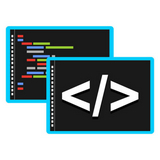
在 go 语言中,当程序中所有的 goroutine(包括主 goroutine)都处于等待状态,且没有 goroutine 能够继续执行时,运行时会检测到这种状态并抛出“all goroutines are asleep - deadlock!”的错误。这通常意味着程序逻辑陷入了僵局,没有新的事件能够触发 goroutine 的唤醒。死锁是并发编程中一个常见的挑战,尤其在使用通道(channel)进行 goroutine 间通信时,如果不正确地设计和使用,很容易导致死锁。
Go 语言的通道是 Goroutine 之间进行通信的主要方式,它们提供了一种同步和数据传输的机制。通道可以是无缓冲的(unbuffered)或有缓冲的(buffered)。无缓冲通道在发送和接收操作时都会阻塞,直到另一端准备好进行相应的操作。这种同步特性是 Go 并发模型的核心,但也是导致死锁的常见原因。
让我们分析一个尝试实现三个 Goroutine 之间相互通信的 Go 程序,该程序在运行时遇到了死锁错误。通过对代码的详细审视,我们可以发现导致死锁的几个关键问题。
原始代码片段:
package main
import (
"fmt" // 使用fmt而非print,更符合Go规范
"math/rand" // 推荐使用math/rand
"time" // 用于rand的种子
)
func Routine1(command12 chan int, response12 chan int, command13 chan int, response13 chan int) {
// ... (代码逻辑与原问题类似,但已修正rand.Intn的用法)
}
func Routine2(command12 chan int, response12 chan int, command23 chan int, response23 chan int) {
// ...
}
func Routine3(command13 chan int, response13 chan int, command23 chan int, response23 chan int) {
// ...
}
func main() {
command12 := make(chan int)
response12 := make(chan int)
command13 := make(chan int)
response13 := make(chan int)
command23 := make(chan int)
response23 := make(chan int)
go Routine1(command12, response12, command13, response13)
go Routine2(command12, response12, command23, response23)
Routine3(command13, response13, command23, response23) // 注意这里缺少 'go' 关键字
}问题一:Goroutine 未正确启动
在 main 函数中,Routine1 和 Routine2 都通过 go 关键字以独立的 Goroutine 形式启动,但 Routine3 却直接被调用:
go Routine1(...) go Routine2(...) Routine3(...) // 错误:缺少 go 关键字
这意味着 Routine3 是在主 Goroutine 中以同步阻塞的方式执行的。由于 Routine3 内部包含通道发送和接收操作,它可能会在等待其他 Goroutine 的通信时阻塞主 Goroutine。如果其他 Goroutine 依赖于 Routine3 的进度,而 Routine3 又在等待它们,这就会形成一个循环依赖,导致死锁。正确的做法应该是将 Routine3 也作为一个独立的 Goroutine 启动:
go Routine1(command12, response12, command13, response13) go Routine2(command12, response12, command23, response23) go Routine3(command13, response13, command23, response23) // 修正:添加 go 关键字 // 为了防止main函数提前退出,需要某种同步机制,例如WaitGroup或一个阻塞的接收操作
问题二:通道参数传递错误
原始代码中,main 函数在调用 Routine3 时,传递的通道参数存在逻辑错误:
// 原始调用: // Routine3(command12, response12, command23, response23) // 预期: // Routine3(command13, response13, command23, response23)
根据问题描述,Routine3 应该与 Routine1 通过 command13 和 response13 进行通信。然而,原始代码在 main 函数中将 command12 和 response12 传递给了 Routine3。这意味着 Routine3 无法访问到 command13 和 response13 这两个通道,而 Routine1 却在尝试向 command13 发送数据,或者从 response13 接收数据。
例如,在 Routine1 中:
if y%2 != 0 {
command13 <- y // 尝试向 command13 发送
}
// ...
case cmd2 := <-response13: // 尝试从 response13 接收
print(cmd2, " 1st\n")由于 Routine3 接收到的参数是 command12 和 response12(而不是 command13 和 response13),并且 Routine2 也没有处理 command13 和 response13 的逻辑,导致 command13 和 response13 这两个通道在 Routine1 尝试进行发送或接收时,永远不会有对应的接收或发送方,从而导致 Routine1 阻塞,进而引发死锁。
问题三:无缓冲通道的阻塞特性
Go 的无缓冲通道在发送和接收时都是阻塞的。这意味着:
在上述代码中,如果 Routine1 尝试向 command13 发送数据,而没有任何 Goroutine(因为参数传递错误或逻辑缺陷)准备从 command13 接收数据,那么 Routine1 将永远阻塞。如果所有 Goroutine 都以这种方式阻塞,死锁便会发生。
问题四:缺乏清晰的通信设计
原始代码的通道命名(如 command12, response12)虽然尝试表示通信双方,但缺乏对消息流和职责的详细说明。在一个复杂的并发场景中,如果缺乏清晰的设计图和消息流描述,很容易在实现过程中混淆通道的用途和方向,导致逻辑错误。
为了避免 Go 并发程序中的死锁,并构建健壮、可维护的系统,以下是一些关键的策略和最佳实践:
在编写任何并发代码之前,首先要明确 Goroutine 之间的职责和通信模式。绘制消息流图是极其有效的方法,它可以帮助你可视化数据如何在 Goroutine 之间流动,以及哪些 Goroutine 负责发送和接收哪些消息。
示例图示(概念性):
+-----------+ command12 +-----------+
| Routine 1 | <-------------------> | Routine 2 |
| | response12 | |
+-----------+ +-----------+
^ ^
| command13 | command23
| |
v v
+-----------+ response13 +-----------+
| Routine 3 | <-------------------> | Routine 3 | (这里是示意,实际Routine3只一个)
+-----------+ response23 +-----------+(注:上述图示仅为概念,实际应更精确地表示通道方向和通信对)
通过清晰的图示,可以确保每个通道都有明确的发送方和接收方,避免遗漏或混淆。
示例:简单的生产者-消费者
package main
import (
"fmt"
"time"
)
func producer(data chan int) {
for i := 0; i < 5; i++ {
fmt.Printf("Producer: Sending %d\n", i)
data <- i // 发送数据到通道
time.Sleep(time.Millisecond * 100)
}
close(data) // 生产完毕,关闭通道
}
func consumer(data chan int) {
for x := range data { // 从通道接收数据,直到通道关闭
fmt.Printf("Consumer: Received %d\n", x)
time.Sleep(time.Millisecond * 200)
}
fmt.Println("Consumer: Data channel closed, exiting.")
}
func main() {
dataChannel := make(chan int) // 无缓冲通道
go producer(dataChannel)
consumer(dataChannel) // 主 Goroutine 作为消费者
fmt.Println("Program finished.")
}当一个 Goroutine 不再需要向通道发送数据时,应该关闭通道。关闭通道是一个重要的信号,表示没有更多的数据会到来。接收方可以通过 value, ok := <-ch 语法来检测通道是否已关闭:
val, open := <-myChannel
if !open {
// 通道已关闭,且没有更多数据
fmt.Println("Channel is closed.")
return
}
// 否则,val 是接收到的数据在 for range 循环中,Go 会自动处理通道关闭的情况,当通道关闭且所有缓冲数据被读取后,循环会自动退出。但要注意,不要尝试向已关闭的通道发送数据,这会导致 panic。
select 语句允许 Goroutine 同时等待多个通道操作。它可以处理以下情况:
select {
case x, open := <-command12:
if !open {
// command12 已关闭
return
}
// 处理从 command12 接收到的数据
case y := <-response13:
// 处理从 response13 接收到的数据
case <-time.After(5 * time.Second): // 超时机制
fmt.Println("Operation timed out.")
return
default: // 非阻塞操作
// 没有通道准备好,立即执行此分支
}清晰的变量和函数命名对于理解并发逻辑至关重要。避免使用过于泛泛的名称,例如 cmd1, cmd2。对于通道,可以考虑使用能体现其数据类型和流向的名称,例如 requestChan, responseChan, dataStream 等。
主 Goroutine 必须等待所有子 Goroutine 完成其工作,否则主 Goroutine 可能会提前退出,导致子 Goroutine 被终止,或者子 Goroutine 还在等待通信,从而引发死锁。常用的等待机制包括:
package main
import (
"fmt"
"sync"
"time"
)
func worker(id int, wg *sync.WaitGroup, done chan bool) {
defer wg.Done() // Goroutine 完成时通知 WaitGroup
fmt.Printf("Worker %d starting\n", id)
time.Sleep(time.Second) // 模拟工作
fmt.Printf("Worker %d finished\n", id)
done <- true // 通知主 Goroutine 完成
}
func main() {
var wg sync.WaitGroup
doneChan := make(chan bool, 2) // 缓冲通道,用于接收worker完成信号
wg.Add(2) // 添加两个 Goroutine
go worker(1, &wg, doneChan)
go worker(2, &wg, doneChan)
// 等待所有 worker 完成,或者使用 WaitGroup
// 方法一:从通道接收完成信号
<-doneChan
<-doneChan
fmt.Println("All workers signaled completion via channel.")
// 方法二:使用 WaitGroup
wg.Wait() // 等待所有 Goroutine 完成
fmt.Println("All workers finished via WaitGroup.")
}“all goroutines are asleep - deadlock!”错误是 Go 并发编程中一个明确的信号,表明程序逻辑存在问题。通过本教程的分析,我们可以得出以下关键点和最佳实践:
通过遵循这些原则,开发者可以更有效地调试和预防 Go 并发程序中的死锁问题,构建出高效、稳定的并发应用。
以上就是Go 并发编程:深入理解通道死锁与有效预防的详细内容,更多请关注php中文网其它相关文章!

编程怎么学习?编程怎么入门?编程在哪学?编程怎么学才快?不用担心,这里为大家提供了编程速学教程(入门课程),有需要的小伙伴保存下载就能学习啦!

Copyright 2014-2025 https://www.php.cn/ All Rights Reserved | php.cn | 湘ICP备2023035733号